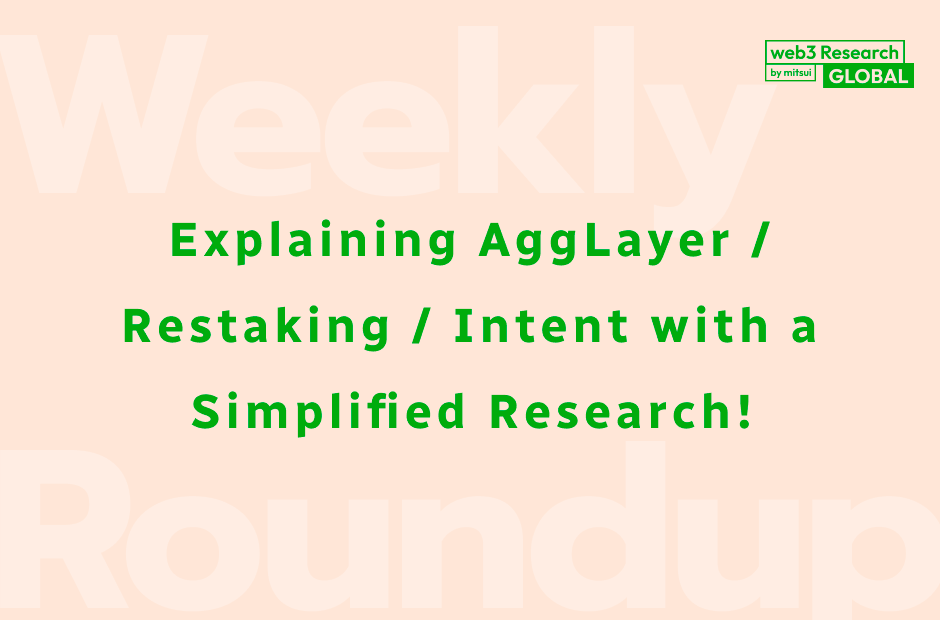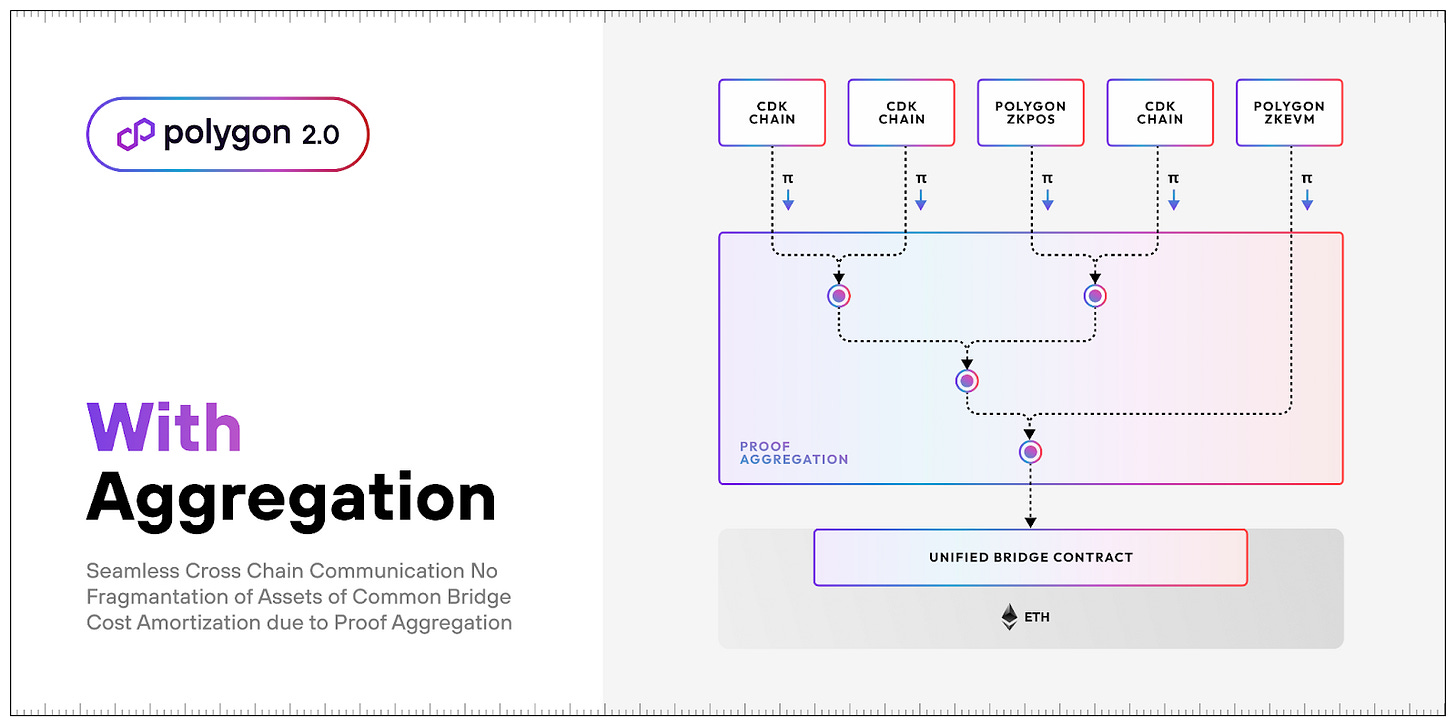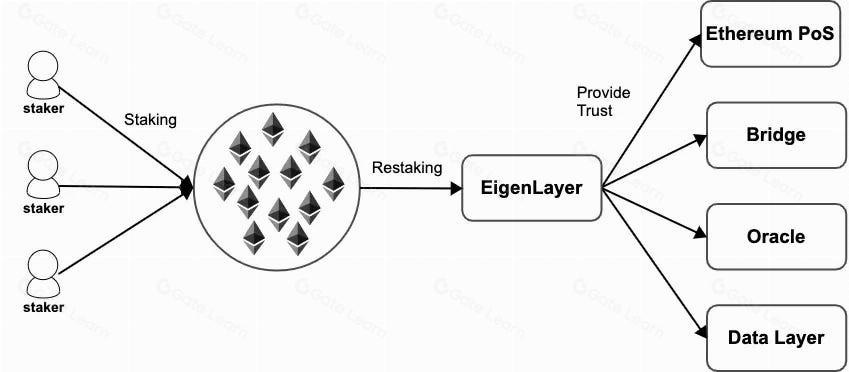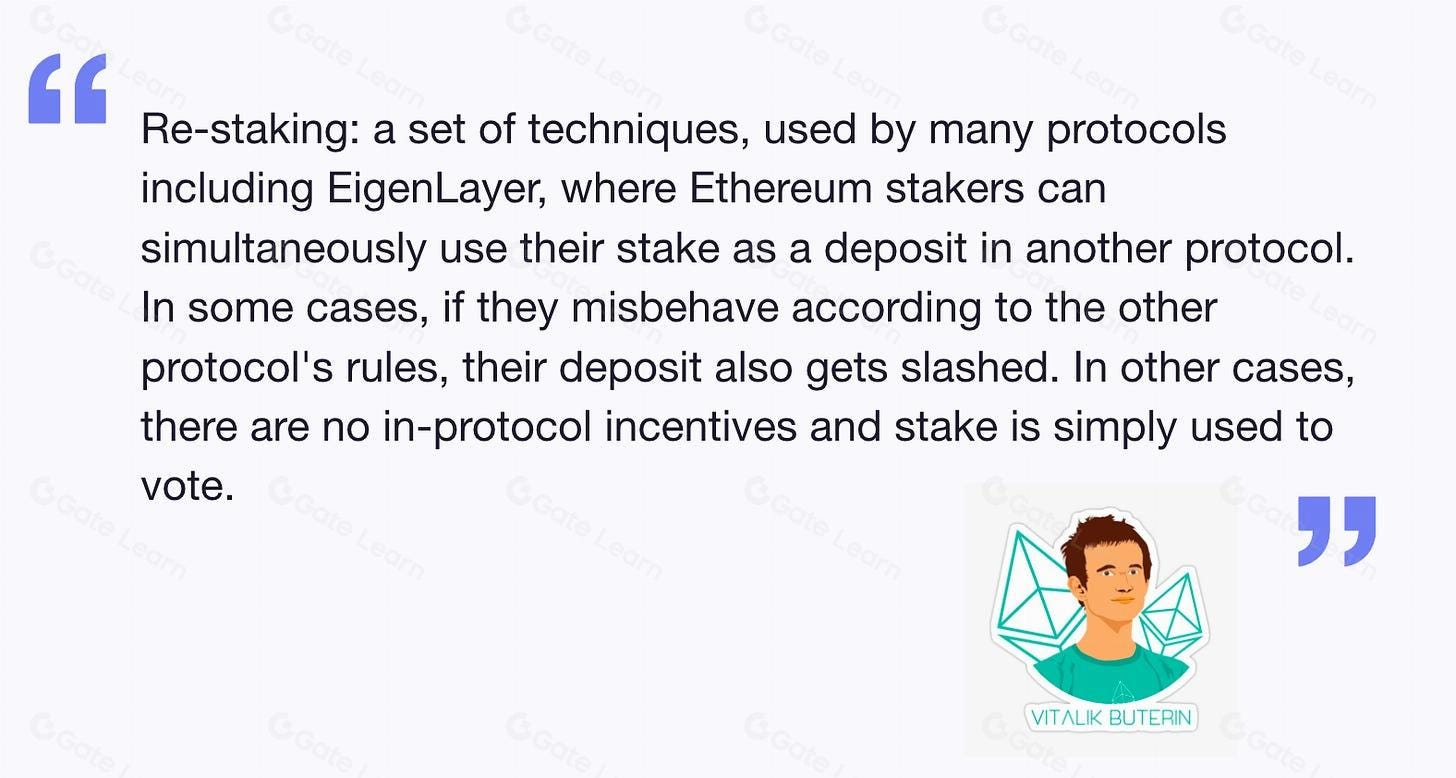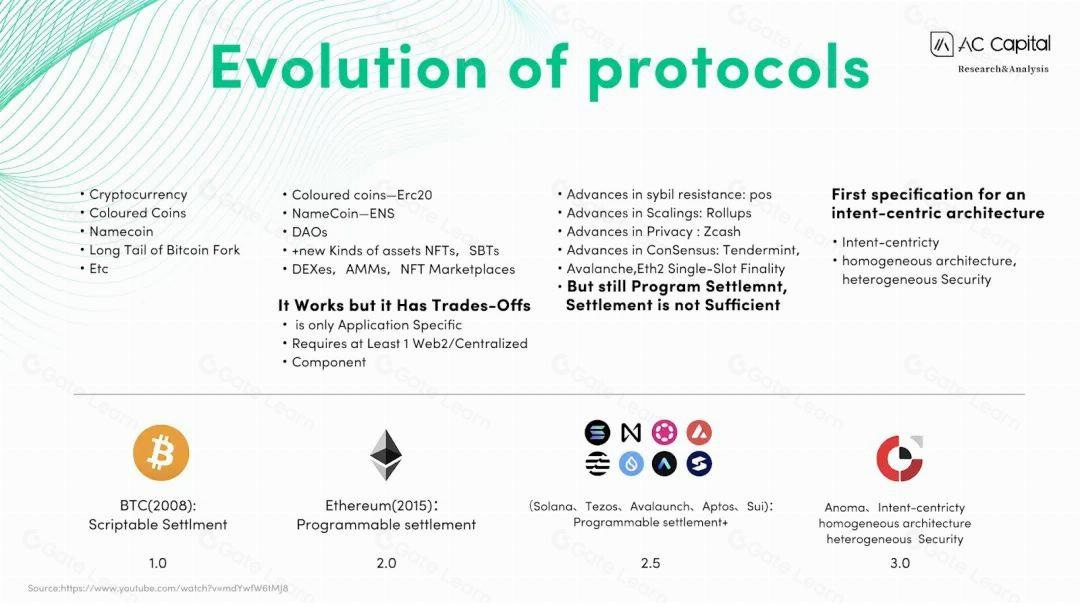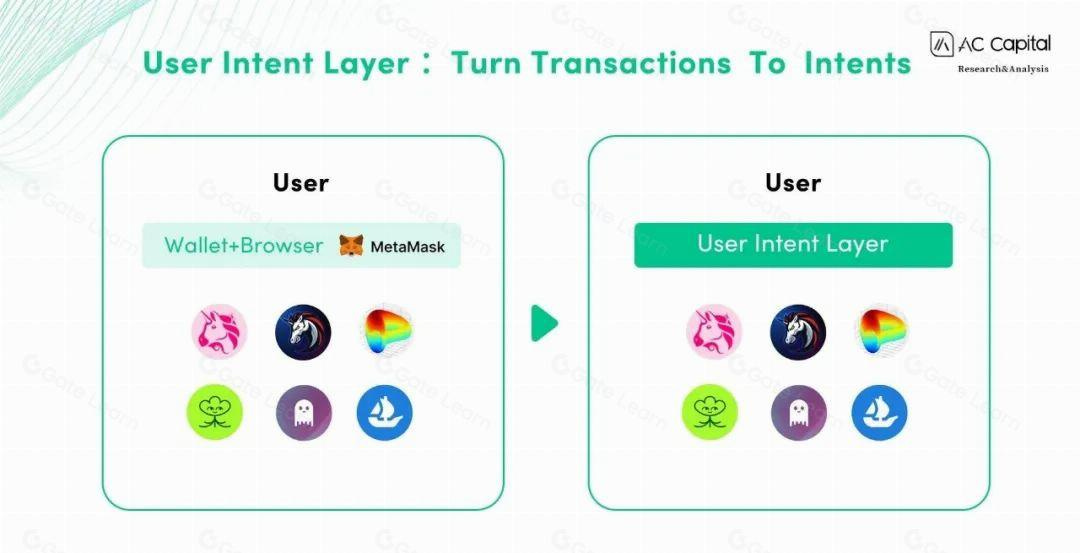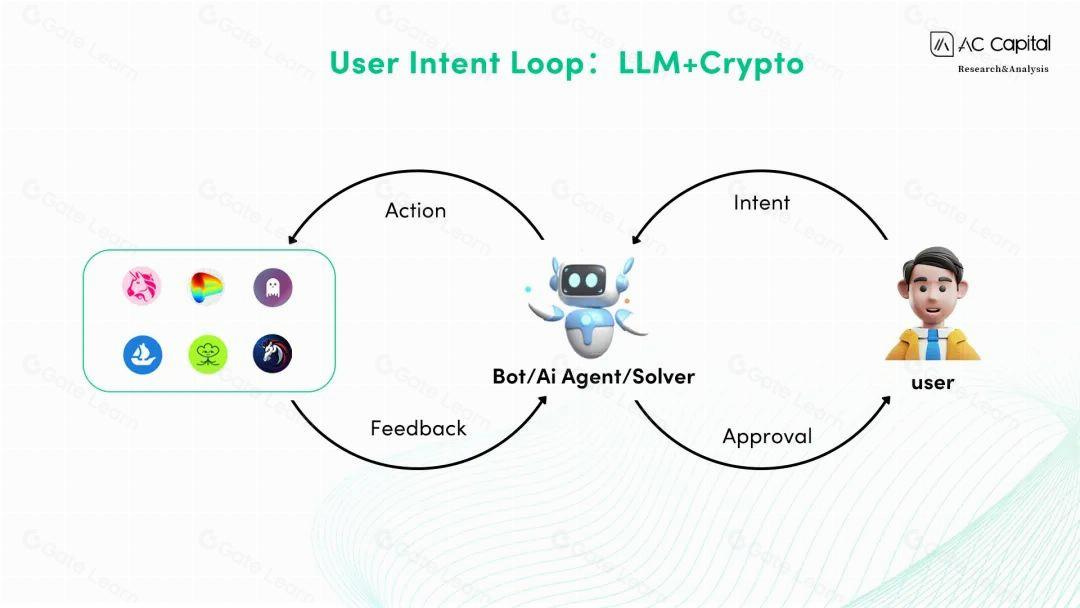Explaining AggLayer / Restaking / Intent with a Simplified Research!
A Brief Explanation of Three Recently Interesting Words!
Good morning.
I am Mitsui, a web3 researcher.
Today, I have a new project called "Quick Research." I often get asked how I gather information and conduct research, and since the web3 industry introduces new terms one after another, I will write an article with research notes on the terms and projects that caught my attention.
The first installment is about "AggLayer," "Liquid Staking," and "Intent."
Please note that since this is a quick research, there may be incorrect information.
AggLayer

Polygon announced on January 25th a distributed protocol that enables blockchain interoperability.
It will become the next-generation blockchain solution that resolves the drawbacks of monolithic and modular approaches and leverages their advantages.
Users can execute transactions in a multi-chain environment with the sensation of using a single chain.
In the final state of AggLayer, end users will be able to execute cross-chain atomic transactions in less than 1 second.
○Logic
Zk proofs are submitted from all chains and sent to the aggregation protocol.
Aggregated proofs are committed to Ethereum.
○Benefits
Connected to AggLayer L1 and L2: Allows for integrated liquidity while maintaining sovereignty, making liquidity management easier.
dApp developers: Can reach beyond their own ecosystem. Even if a dApp is on a different chain, users from other chains can interact with the dApp without the hassle of bridging UX.
End users: Enjoy a user experience similar to the internet. It creates an environment without the need for complex and frequent bridging.
○Impressions
Since the details have not been fully announced and it is only the first stage of release, it seems like it will gradually evolve from here.
Although it is just an assumption based on the limited information, is it a layer that enables safe, decentralized, fast, and reliable execution of atomic transactions across multiple chains using Zk?
If we can achieve something like rollups on all chains, it will provide multi-chain support from a user's perspective.
○Reference Links
Aggregated Blockchains: A New Thesis (Announcement Blog)
Aggregation layer (Documentation)
Aggregation (Founder's Mirror)
Restaking
Enable projects that cannot use Ethereum's security system to utilize Ethereum's security.
Have individuals who are staking with ETH restake their tokens.
Enable the same stake used to secure Ethereum's PoS to be used to secure other networks.
Dapps will have enhanced security, while stakers will experience increased yields.
Offerings such as EigenLayer.
○Concerns:
Protocol-specific slashing conditions, risks of EigenLayer smart contracts, challenges of centralization, lack of liquidity, etc.
There is also a possibility of increasing security risks for the Ethereum mainnet.
The EigenLayer team is already in discussions with the Ethereum Foundation to mitigate risks.
Swell DAO, along with AltLayer, Witness Chain, Stakely, Pier Two, InfStones, HashQuark, Everstake, etc., has established the Liquid Restake Council.
○Impressions
There was a lot of excitement about EigenLayer's airdrop, but I didn't quite understand restaking.
From what I've researched, I understand the logic, but it might take a bit more time to have a deeper technical understanding.
By doing so, I should be able to understand the magnitude of the impact and how important of an invention it is.
Increasing returns is great, but it also makes the risk more challenging.
○Reference Links
Intent
Intention means executing transactions that align with the user's intention.
For example, when a user wants to swap from token A to token B, it doesn't matter which protocol or transaction is used. The intention is to have it done in a low-cost and fast manner.
Currently, users are using Uniswap to exchange tokens A and B. However, with intent-based transactions, users only need to express their intent to swap A for B at the lowest cost possible, and an appropriate protocol will be automatically selected to execute the transaction.
MetaMask has also started experimenting with intent.
The word "intent" was mentioned in Paradigm's blog in June 2023.
Anoma Foundation, which is gaining attention in the intent-based protocol space, has received a total investment of $57.8 million. This includes a full-stack Dapp architecture called "Anoma" and a privacy-centric Layer 1 solution called "Namada" within an intent-centric architecture.
Anoma advocates for intent to be the user-friendly concept that will become central to future transactions.
With integration with AI, intent will further accelerate.
There are concerns about technical constraints and centralization risks.
The growth of AA is also necessary, and it is necessary to bundle transactions or delegate to the intent layer.
AA+intent will accelerate the emergence of intelligent wallets (SCW).
○Impressions
This area is hot and has great potential.
I will write an article organizing the current chaos map in a report soon.
It would be great if it could be realized in a user-friendly manner without compromising decentralization.
It is exactly the job theory thinking that users do not want to trade on Uniswap specifically, but they want the cheapest, safest, and fastest swap based on their "intent".
○Reference Links
Reasons why Intent-Based Architecture brings about a paradigm shift
Intent: The starting point for intelligent interactions in Web3
Above, I conducted a simple research on three words that I was personally interested in. It may be surprisingly easy to read to write articles that compile various topics, words that personally interest me, and projects in this way. If there is a response, I will continue.
I am interested in all of them, so at some point, I will write more in-depth industry reports or, in particular, delve into research articles on notable projects. Please look forward to it.
Disclaimer:I carefully examine and write the information that I research, but since it is personally operated and there are many parts with English sources, there may be some paraphrasing or incorrect information. Please understand. Also, there may be introductions of Dapps, NFTs, and tokens in the articles, but there is absolutely no solicitation purpose. Please purchase and use them at your own risk.
About us
A web3 newsletter delivered in five languages around the world. We deliver various articles about web3, including project explanations, news and trend analysis, and industry reports, every day. You can subscribe for $8 per month ($80 per year) and receive research articles that took 100 hours to complete every day.
Author
mitsui
A web3 researcher. Operating the newsletter "web3 Research" delivered in five languages around the world.
Contact
The author is a web3 researcher based in Japan. If you have a project that is interested in expanding to Japan, please contact the following:
Telegram:@mitsui0x
*Please note that this newsletter translates articles that are originally in Japanese. There may be translation mistakes such as mistranslations or paraphrasing, so please understand in advance.


